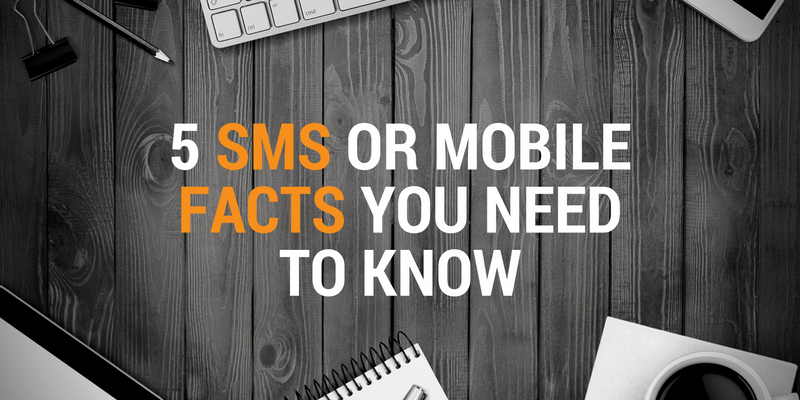SMS Remarketing: What It’s All About

Have you ever visited a website, then realised you were seeing ads from that site everywhere else you went online? It wasn’t coincidence, it’s called “remarketing”. Marketers have been using it to get people back to their website for years. But the evolution of mobile marketing calls for something a little different. And that’s where SMS remarketing comes in.
The basic concept is the same, but instead of presenting ads to website visitors, you send them follow-up SMS messages. And you only do it in specific circumstances, like when they abandon their cart.
Abandoned Carts
While exact rates vary between industries and even countries, average shopping cart abandonment rates run between 70-80%. So, between 7-8 of every ten online customers leave their shopping cart prior to checking out. A SaleCycle.com survey of retail and fashion clients found the following reasons for abandoned carts:
- 34% Are just browsing or researching pricing
- 23% Shipping either costs too much or the delivery time isn’t acceptable
- 18% Prices are too high or they want to comparison shop to find it cheaper
- 15% Plan on buying the item in the store rather than online
- 6% Payment related issues
- 4% Technical issues
Many of these are hurdles that can be overcome, if only you can get the potential buyers attention back. As a retailer, you may already use email to reach out to these customers and try to get them to come back. But email is slow, and even if you contact them immediately, they may not see it. This is even more likely with Gmail addresses since they’ve added their “Promotions” folder. Anything Google determines is retail-related is filed away out of the inbox unless the user specifically tells it not to do that.
Email still has its place, but when you’re trying to reach out quickly, SMS is often the better option.
Using SMS to Get the Sale Back
The first consideration in using SMS is whether you have the mobile number of the person who abandoned their cart. If they are a regular shopper you might already have it. But if you don’t capture that information already, you may want to consider asking for it during your account creation process.
If you do have their mobile, and they’ve filled up their cart and left, you can contact them about it. According to the ICO guidelines this is a “soft” opt-in. You can send them SMS messages that relate to the items or sale they attempted to complete. It doesn’t give you cart blanche to send them messages about everything, but as long as you keep it relevant to their purchase (even if it was incomplete) then you are ok.
But why would you want to use SMS when you already use email? Well, why do you do social media when you do email? Or online advertising when you do email? They are different channels to reach the same goal. Some customers, especially if they’ve given you their mobile number, might respond better to getting an SMS message. In fact, almost every study that compares SMS and email reports that SMS receives higher open and click-through rates than email.
But you just won’t know if one works better than the other (or they work better together) for you unless you try it. If you still need some motivation to get started, here are some other numbers from a Salecycle.com study of SMS remarketing:
- 5% of people who got an SMS with a link to their cart, clicked the link to view their selections
- 7% of those that clicked on their cart link, completed a purchase
Those numbers translate into 4-5 sales for every 100 abandoned carts that received SMS notifications. That’s a pretty impressive conversion rate. According to SmartInsights, average online conversion rates in the UK ran between 4% and 5% in the last quarter of 2016. If you can get back another 5% by using SMS, isn’t that like doubling your conversions?
Of course, SMS can be used by online retailers for other purposes too such as order confirmations, shipping notifications, customer surveys, product announcements, and marketing. If you want to know more about it, you can download our Mobile Marketing Guide. You can also reach our friendly SMS experts via live chat, email or phone. They’d be happy to talk with you about using SMS messaging for online retail business.
Related Articles
Do Your SMS Marketing Messages Sound Spammy?
If you aren’t seeing a positive response from your SMS marketing then your list may be thinking of it as spam and just ignoring it like they do much of their email. So take your latest marketing messages and examine them again with these four questions in mind.
A Checklist for Your First SMS Marketing Campaign
This year SMS marketing is predicted to become an even bigger piece of the mobile marketing pie. Businesses of every size will be launching their first ever campaigns. If you’re one of them, take a look at our handy SMS marketing checklist below to help you do it right from the very beginning.
SMS Marketing for Artisan Food Producers
Is Your SMS Marketing Keeping Customers Loyal by Being Fun?
When you think about your SMS marketing campaigns would you label them as fun? Is there any aspect of your SMS marketing or loyalty program that you think customers would call fun? If so, you're going to love what you read in this blog. If not, then you need to read this blog. It turns out that a little bit of fun and games can keep your customers more engaged – and more loyal.
Do This One Thing and You’ll Improve Your SMS Marketing ROI
SMS marketing is not quite like most other marketing. You have such a limited space to get your point across, just 160 characters, more or less. It’s not unlike having to create a print advert for a small space, but somehow it can seem more intimidating. That’s why sometimes it seems like marketers forget one basic rule about writing offers: Always lead with the offer! Sounds simple, right?
Technology And Text Messaging Support In-Store Shopping Experiences
Shoppers are very tech savvy. Even when they shop in store they are using their mobiles to do price comparisons, look up reviews or post on social media. And while your customers are busy using tech, your store needs to be using it too. SMS is one of those technologies that can really enhance the shopping experience whether your shoppers are in store, or not.
5 SMS or Mobile Facts You Need to Know
So many of us are used to having our mobiles around nearly 24 hours a day that it’s easy to forget it’s still a growing industry. And though SMS has been around for over two decades, the ways we use it and people’s willingness to use it continues to grow. So for this blog I picked out five facts about mobile and SMS that really make the case that SMS for business has come of age. Let’s see if you agree.
3 Tips on Making SMS Messaging an Integrated Part of Your Marketing
One of the key takeaways from the Salesforce 2015 State of Marketing Report was that when mobile is integrated into your marketing strategy, everything performed better. That makes sense when you think about it. Mobile is a unique channel that provides you a direct link to your customers.
How 2017 Will Change SMS Marketing
Setting New Year's resolutions for your business can be risky since it feels like you're only really setting yourself up to fail. It's much better instead to try and focus on one achievable goal and do everything to succeed and improve in that area. With its meteoric rise to popularity and outstanding success in 2016, businesses should be using 2017's welcome reprise to integrate SMS marketing into their business development strategy.
5 Ways to Use SMS to Save Money and Improve Your Retail Business
Every good retail business owner knows that the key to success is keeping his or her customers happy. Your level of customer service should be all encompassing to succeed and should consist of more than just being polite to the customer at the till.












